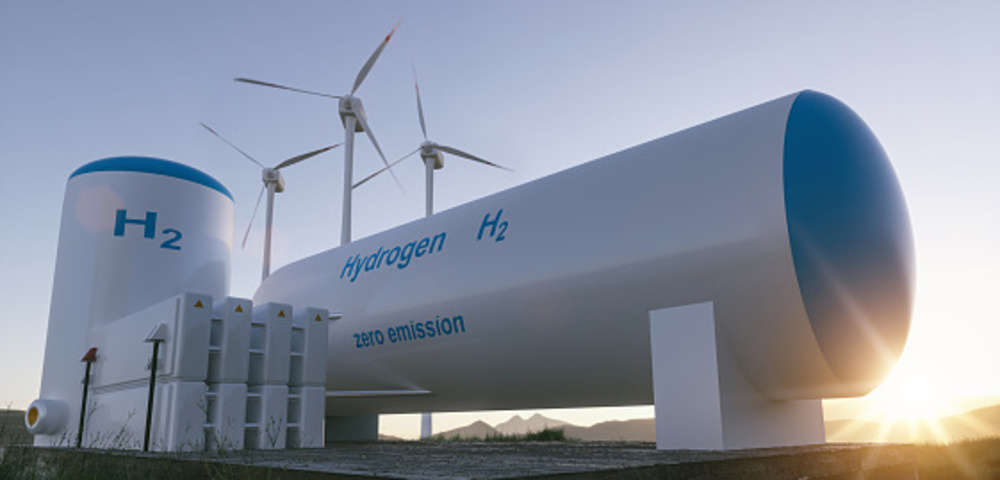It was full house for the debate on the uses and future of hydrogen at a recent conference in London. What made it interesting was that the speakers did not all agree on where hydrogen would fit into the energy transition landscape.
Nor will you find experts in agreement on the ‘color’, shape or form of hydrogen that can provide the most benefit in the decarbonization effort. Hydrogen may be the most abundant and lightest molecule in the universe, but it lacks the calorific value of natural gas, so you need a lot of it. And because it is such a small molecule, it has a tendency to escape, which makes it hard to handle.
Green hydrogen requires massive amounts of energy to split hydrogen and oxygen and to do so, a combination of renewable energy sources and electrolyzers are needed. Existing electrolyzers contain rare minerals that are concentrated in only a few areas of the world, not all of them are stable democracies. That makes it expensive even if there seems to be a preference for green over grey, blue, pink or any other color of the rainbow. Renewable energy, either wind or solar, will need to be scaled up in tandem.
Abdurrahman Khalidi, Chief Technology Officer at GE Gas Power for Europe, the Middle East and Africa, explained in a recent interview that to replace a gas turbine power plant with hydrogen would require three times the volume because “the latent energy in a hydrogen molecule is a little bit less than one third of gas.” Then there is the problem of transporting hydrogen, which takes a lot more energy to liquefy than say converting natural gas to liquid form as LNG and many more tanks to transport it. Ammonia as a carrier of hydrogen has been touted as the answer to moving hydrogen but it needs to be cracked back into hydrogen at destination. It is a circuitous journey.
So far, a lot of what is happening in hydrogen “is pretty small scale,” Martin Lambert, head of Hydrogen Research at the Oxford Institute for Energy Studies told London’s International Energy Week. Current global production of 90mn t/y is used in refineries and in ammonia and petrochemicals plants today. European hydrogen demand is about 10mn t/y but to produce enough green hydrogen to replace that volume would require about 500 terawatt hours of renewable energy, which is roughly the amount of renewable energy that Europe produced in 2020, he said. Shell’s proposed 200MW electrolyzer being built in Rotterdam would provide only 10% of one refinery’s hydrogen needs. What hydrogen can do is to fill the gaps in industrial sectors where electrification is not an option.
In order to get to net zero by 2050, the world needs as many zero-carbon molecules as possible and only hydrogen can lay claim to being a zero-carbon gas because there are no end-user emissions. Hence the European Union’s focus on mainly green hydrogen as a solution to its energy and sustainability agenda rather than blue, which is made by reforming natural gas along with carbon capture and storage. That is where the problem lies because of the methane emissions associated with the production of natural gas.
For a country like Germany, which has been hit hard by the interruption of Russian supplies because of the war in Ukraine, it has made hydrogen a key plank of its energy policy. Yet in order to do that, it will have to eliminate coal, of which it is burning large quantities at present to replace Russian gas, nuclear and eventually the LNG it has started importing recently. It’s a tall order.
Graham Cooley, former CEO of ITM Power, told the same London conference that about 70mn t/y of industrial hydrogen is made by reforming natural gas today, of which 55% is ammonia. Under the EU’s Renewable Energy Directive, refineries will have to make 16% of their product renewable by 2030, which is only seven years away, he added. This will require 600 gigawatts of electrolysis, which he said was “an incredible challenge even scaling to that level.”
Consultant Michael Liebreich, who said he had often been labeled a “hydrogen denier,” referred to a study by McKinsey which sees hydrogen production rising from 90mn t/y to 600mn t/y by 2050/2060. He believes the volume will be closer to 200-300mn t/y because of the scale of renewable energy and electrolyzers needed. The world’s largest electrolysis plant is being built in China at a cost of $850mn and will require 720MW of renewables to meet a mere 0.03% of current global hydrogen demand, he said. Another facility being built as part of the Asian Renewable Energy Hub is 6,500 sq km and takes more than two hours to drive around and will produce only 1.5% of current hydrogen demand, he said. “You need 67 of these facilities to replace existing hydrogen demand,” he added.
Source: mees.com







